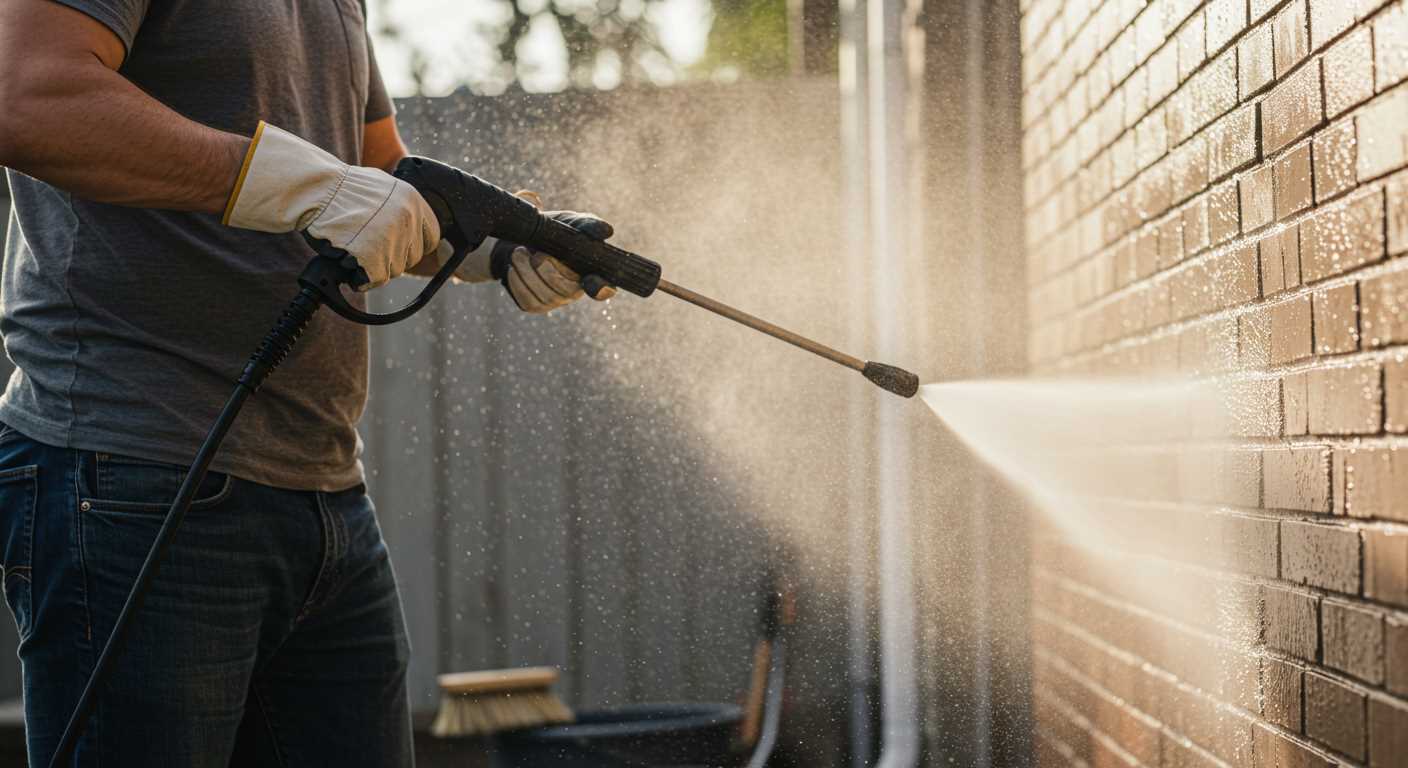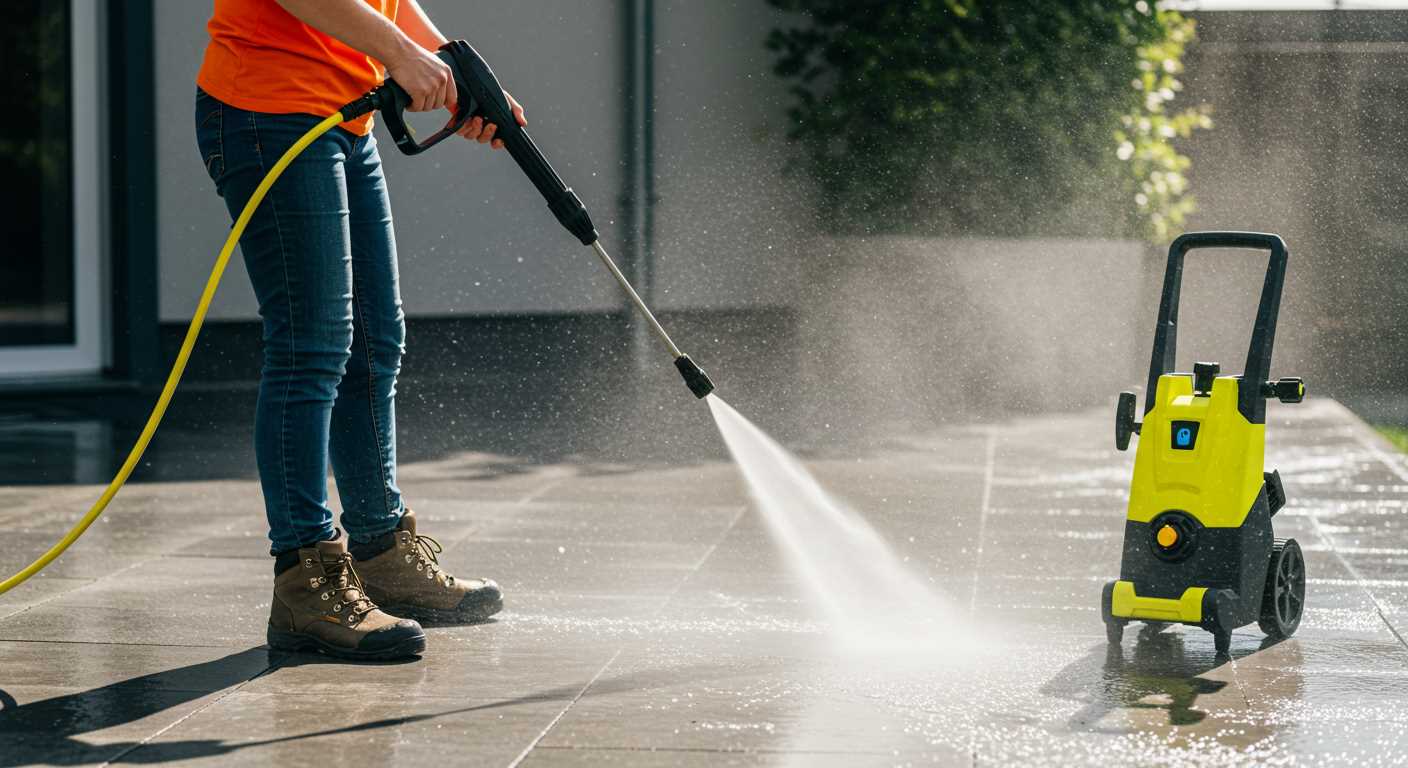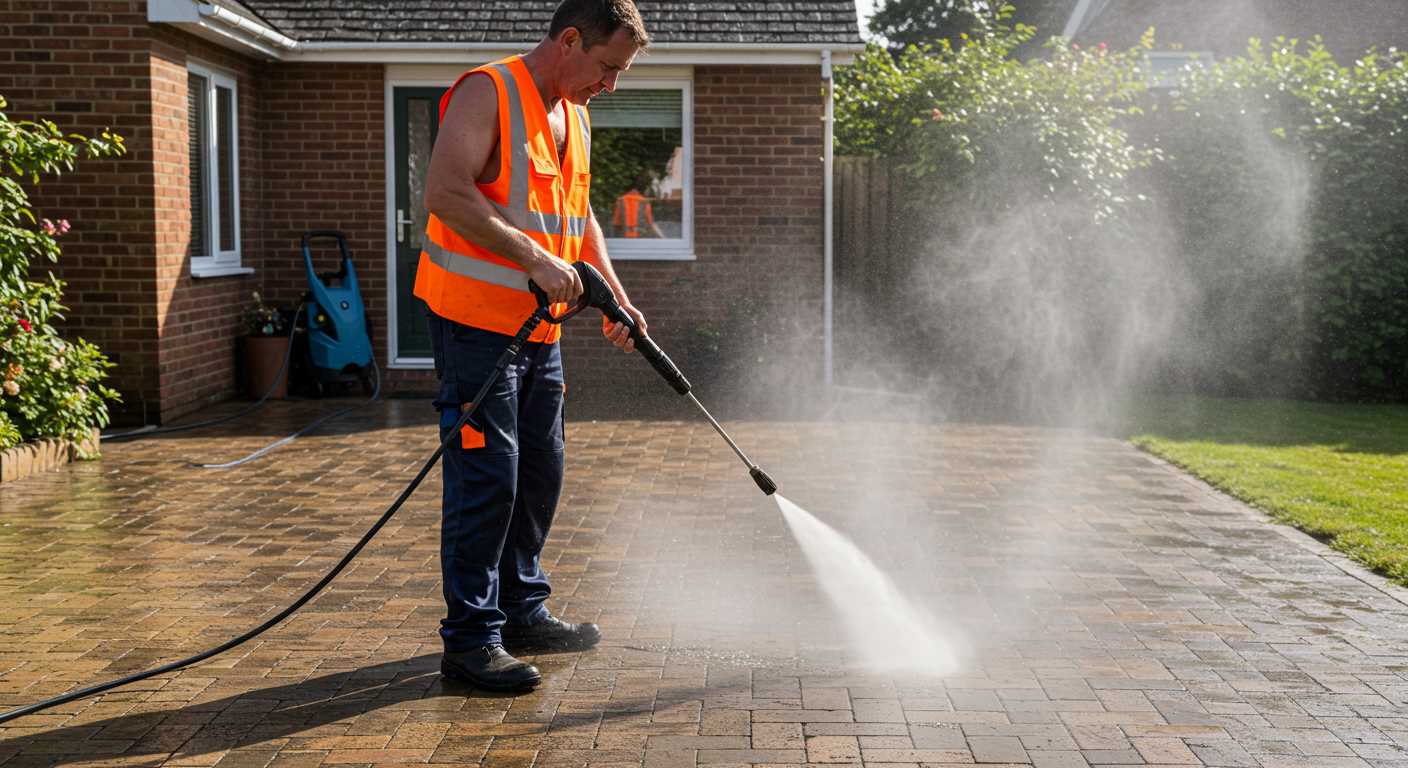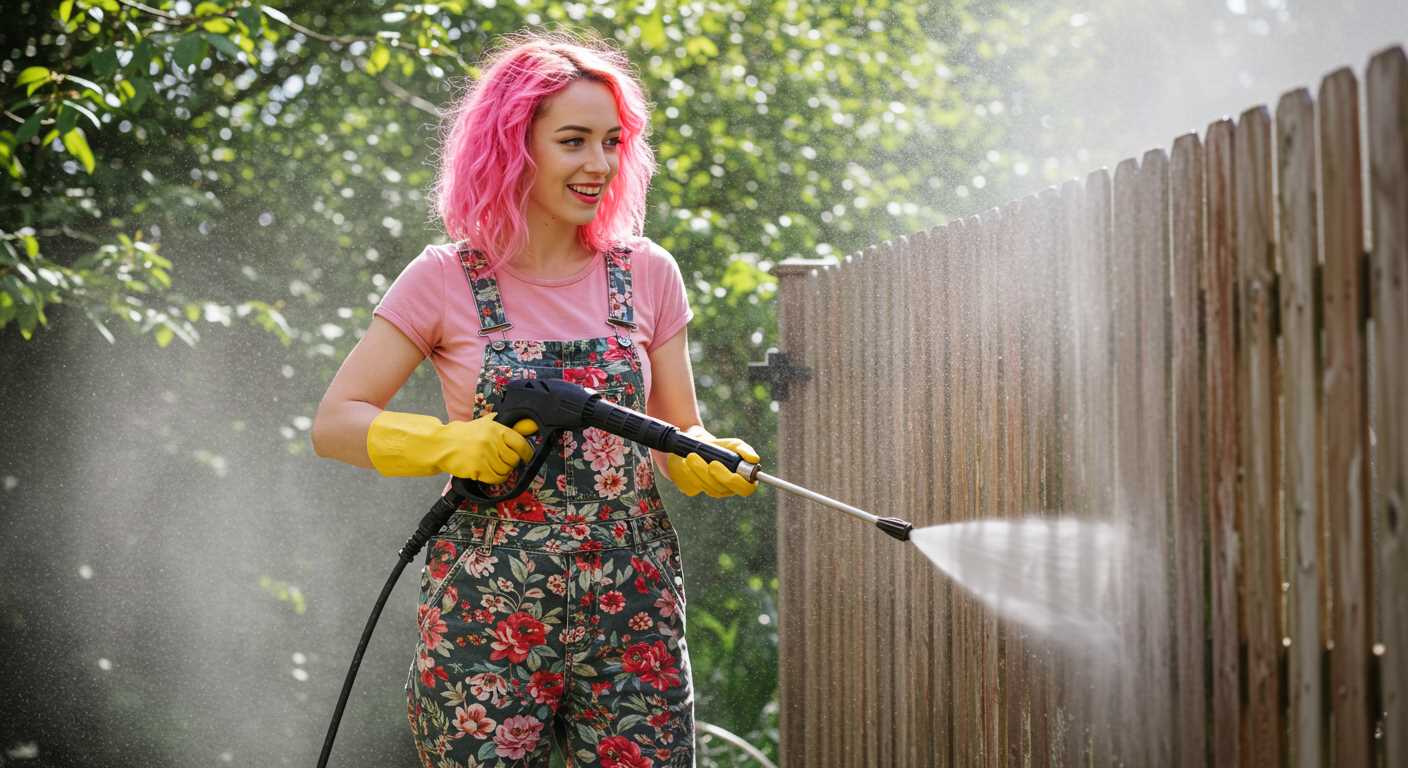


Begin with a solution that many overlook: a mixture of warm water and mild detergent. This concoction serves as an excellent starting point for removing grime and stains that accumulate over time. I remember my first attempt at refreshing a neglected space using this method. Armed with a stiff-bristled broom, I applied the soapy water generously, allowing it to sit for a few minutes before scrubbing. The results were surprisingly satisfying.
For tougher spots, consider a paste made from baking soda and water. I stumbled upon this trick during a weekend project when stubborn stains refused to budge. After applying the paste to the affected areas and letting it work its magic for about 30 minutes, a simple scrub revealed a noticeable difference. Rinsing with clean water left the surface looking far more inviting.
Don’t underestimate the power of a vinegar solution either. Mixing equal parts of vinegar and water can tackle mildew or algae growth effectively. I recall using this method on a particularly damp section of my own outdoor area, and the transformation was remarkable. The natural acidity in vinegar breaks down organic matter, making it easier to wipe away.
Lastly, remember to finish with a thorough rinse using a garden hose. This step ensures that any residual cleaning agents are washed away, leaving your outdoor space ready for enjoyment. With these simple, yet effective methods, you’ll find that maintaining the appearance of your outdoor area can be both straightforward and rewarding.
Effective Techniques for Revitalising Stone Surfaces

A mixture of baking soda and water can be a game-changer for stubborn stains. Create a paste using three parts baking soda to one part water, apply it to the stained areas, and let it sit for about 30 minutes. Scrub gently with a stiff-bristled brush, then rinse thoroughly. This method is not only economical but also environmentally friendly.
If you’re dealing with algae or moss, a solution of vinegar and water works wonders. Combine equal parts of white vinegar and water in a spray bottle, generously apply it to the affected areas, and allow it to sit for 15 minutes. Follow this with a scrub and a thorough rinse. The acetic acid in vinegar is highly effective at breaking down organic growth.
<pFor those persistent oil stains, absorbent materials like cat litter or sawdust can be your best friends. Sprinkle the litter over the stain, let it sit for several hours or overnight to absorb the oil, and then sweep it away. Once the bulk is gone, use a degreaser and scrub the area to remove any residue.
If you’re looking for a more robust solution, consider an electric washer for cleaning concrete. While it’s not a DIY method, it can save time and effort for larger areas or more challenging stains.
<pFor regular maintenance, a simple broom and a garden hose can keep your surfaces looking fresh. Sweep away debris and rinse with water regularly to prevent dirt build-up. This method ensures that your outdoor spaces remain inviting and clean with minimal effort.
Gathering Necessary Cleaning Supplies
For an effective restoration of your outdoor surface, assemble the following items: a broom or stiff-bristled brush for debris removal, a bucket for mixing solutions, and a garden hose for rinsing. Choose a suitable cleaning agent; I often recommend a quality soap designed for automotive use, as it can cut through grime effectively. A link worth checking out is the best car wash soap for pressure washers, which can serve as a reliable option for this task.
Next, grab a scrub brush with a long handle for tackling stubborn stains. This will save your back while allowing you to apply some elbow grease where needed. Don’t forget rubber gloves to protect your hands from harsh chemicals, and consider using a face mask if you’re sensitive to dust or cleaning fumes.
If there are any oil stains, having a degreaser on hand will be beneficial. For those persistent patches, a good approach is to sprinkle baking soda or use a mixture of vinegar and water as a natural alternative. Lastly, ensure you have plenty of water available to rinse everything thoroughly once you’ve finished scrubbing.
Preparing the Patio Surface for Cleaning
Clear the area first. Remove all furniture, planters, and other items. This allows for unobstructed access and prevents any damage during the process. Consider moving larger items, like outdoor sofas, to a shaded area to avoid direct sunlight during cleaning.
Inspect the Surface
Check for any cracks or damage. Address these before proceeding, as cleaning solutions may worsen existing issues. Fill cracks with appropriate filler and allow it to cure according to manufacturer instructions.
Remove Debris
- Use a broom to sweep away dirt, leaves, and other debris.
- For stubborn dirt or moss, a stiff-bristled brush can be very effective.
- Consider using a leaf blower for quicker debris removal, especially in larger areas.
Once the surface is clear, it’s ready for the next steps. This preparation ensures that the subsequent cleaning process will be more effective and less time-consuming.
Choosing the Right Cleaning Solution for Stains
For tackling stubborn blemishes on your outdoor surface, selecting an appropriate cleaning agent is paramount. I always recommend starting with a mild detergent mixed with warm water. This combination works wonders on general dirt and grime, making it a go-to for light-duty tasks.
Targeting Specific Stains
For oil-based spots, a dish soap designed to cut grease proves invaluable. Apply it directly to the stain, let it sit for about 15 minutes, then scrub with a stiff-bristled brush. For rust marks, consider a solution comprising equal parts vinegar and baking soda. This natural remedy not only lifts the stain but is also environmentally friendly.
For Tougher Marks
When dealing with mildew or mould, a diluted bleach solution can be effective. Mix one part bleach to three parts water, but ensure to wear gloves and protect nearby plants. Apply it on the affected areas, allow it to penetrate for about 10 minutes, then rinse thoroughly. Always conduct a patch test first to avoid any unwanted damage to the surface.
Scrubbing Techniques for Deep Cleaning
For tough grime, a good scrubbing technique makes all the difference. Begin with a stiff-bristled broom or a deck brush to remove loose dirt and debris. This initial step prevents scratching the surface during deeper cleaning.
Next, apply your chosen cleaning solution generously across the surface. Let it sit for about 10-15 minutes to break down stubborn stains. While it soaks, prepare your scrubbing tools. A long-handled scrub brush is ideal for reaching larger areas without straining your back.
Start scrubbing in sections, working in a circular motion. This method helps lift dirt more effectively than back-and-forth motions. For particularly stubborn spots, apply extra pressure and focus on those areas longer. If you encounter really tough stains, consider using a putty knife or a scraper to gently lift them before scrubbing.
When tackling corners or edges, a smaller scrub brush or an old toothbrush works wonders. It allows for precise cleaning without missing any spots. Rinse the area with a bucket of clean water or a hose, ensuring all residue from the cleaning solution is removed.
After rinsing, inspect the surface for any remaining stains. If necessary, repeat the process on any areas that still appear dirty. Regular maintenance with this scrubbing technique will keep your outdoor space looking its best.
Finishing Touches and Maintenance Tips
After tackling the initial scrubbing, it’s time to give your outdoor space a polished look. Rinse off any remaining cleaning solution with a hose, ensuring that no residue is left behind. This step is crucial; lingering chemicals can lead to a slippery surface when wet. Use a broom or a leaf blower to remove any debris, leaves, or dust that may have settled during the process.
Once everything is rinsed and dry, consider sealing the surface. A good sealant not only enhances the appearance but also protects against stains and weather damage. I remember sealing my own patio for the first time; it was like giving it a fresh coat of paint. Choose a high-quality product that suits your specific needs, whether it’s for UV protection or water resistance.
Regular upkeep is key to longevity. Schedule a monthly sweep to prevent dirt accumulation. For tougher stains, tackle them as soon as they appear. A simple mixture of water and vinegar can do wonders for grease spots. I’ve had great success using this method; it’s effective and eco-friendly. Just apply, let it sit briefly, and scrub gently.
Also, don’t forget to inspect for cracks or chips. Addressing these issues early can save you from bigger repairs down the line. Use a concrete filler to patch up any problematic areas. I’ve learned the hard way that neglect can lead to more extensive damage, so a quick fix can save time and money.
Finally, consider adding outdoor furniture or potted plants to create an inviting atmosphere. Not only does this add character, but it also encourages you to spend more time enjoying your outdoor space. I often find that a well-kept area becomes the hub for family gatherings or quiet evenings with a book.
FAQ:
What materials do I need to clean my concrete patio without a pressure washer?
To clean your concrete patio without a pressure washer, you will need a few basic materials. First, gather a stiff broom or brush for sweeping away loose dirt and debris. You will also need a bucket, warm water, and some cleaning agents like dish soap, white vinegar, or baking soda. For tougher stains, consider using a paste made from baking soda and water. Finally, a scrub brush or sponge will help you scrub away any stubborn stains.
Can I use vinegar to clean my concrete patio, and how should I apply it?
Yes, vinegar can be an effective cleaning agent for your concrete patio. To use it, mix equal parts of white vinegar and water in a bucket. Pour the solution over the stained areas of the patio and allow it to sit for about 30 minutes to break down the grime. After that, scrub the area with a stiff brush or broom, then rinse thoroughly with clean water. This method is especially good for removing mildew and light stains.
How can I remove oil stains from my concrete patio without a pressure washer?
To remove oil stains from your concrete patio, start by sprinkling baking soda or cornstarch over the stain to absorb excess oil. Allow it to sit for at least 30 minutes. Next, mix a solution of warm water and dish soap, and scrub the area with a stiff brush. For stubborn stains, you might want to make a paste using baking soda and water, apply it to the stain, and let it sit for a few hours before scrubbing again. Rinse the area well with clean water to finish the process.
What are some tips for maintaining a clean concrete patio after washing it?
To maintain your concrete patio after cleaning, consider sweeping it regularly to remove debris and prevent stains. If you notice any spills, clean them up promptly to avoid staining. You can also apply a sealant to the concrete surface every few years to protect it from stains and weathering. Additionally, try to keep plants and furniture off the patio during heavy rain to prevent water pooling, which can lead to mildew growth. Regular maintenance will help keep your patio looking its best.





.jpg)


